EXHIBIT SPECIFICATIONS

The Reef on the Road Exhibit is comprised of the following items:
Welcome Banner
Two-sided pull-up windowshade display banner
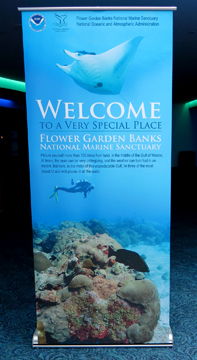
Display Units
Three two-sided displays with artificial coral bases topped by banner images of the sanctuary and overhead acrylic panels with water graphics
- Unit 1: Bright Spot in the Gulf/Teeming with Life
- 55” wide, 38” deep, 96”-120” tall
- 1 Planar PXL2470MW 24" LCD monitor
- 1 Acrylic monitor overlay
- 4 graphics panels (2 on each side)
- 2 LED light bars (1 each side)
- 1 Roku BrightSign media player
- 1 TS750 Electric Flat Lift
- 1 roller barrel display of sanctuary wildlife
- 1 39” cast resin hammerhead shark model with a hollow core

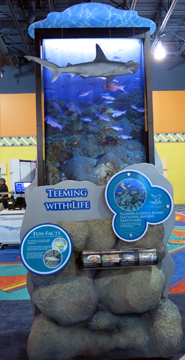
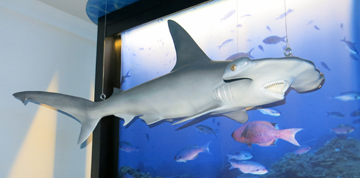
UNIT 1
- Unit 2: Flourishing But Fragile/We All Live Upstream
- 48” wide, 46” deep, 96”-120” tall
- 1 Planar PXL2470MW 24" LCD monitor
- 1 Acrylic monitor overlay
- 4 graphics panels (2 on each side)
- 2 LED light bars (1 each side)
- 1 Roku BrightSign media player
- 1 TS750 Electric Flat Lift
- 1 push-button map display showing watersheds of North America
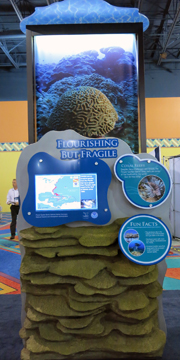
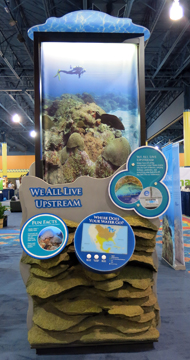
UNIT 2
- Unit 3: Next Generations/Cruising Through
- 55” wide, 38” deep, 96”-120” tall
- 1 Planar PXL2470MW 24" LCD monitor
- 1 acrylic monitor overlay
- 4 graphics panels (2 on each side)
- 2 LED light bars (1 each side)
- 1 Roku BrightSign media player
- 1 TS750 Electric Flat Lift
- 1 laminated Manta Catalog 8-page flip booklet
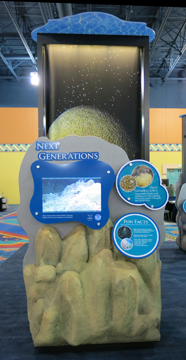
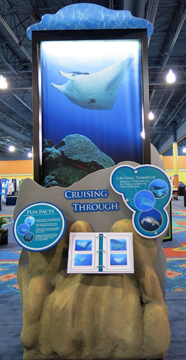
UNIT 3
Miscellaneous Exhibit Supplies
- 3 remote controls for banner lift mechanisms (1 for each unit)
- 3 keys for access panels to interior of each unit (1 for each unit)
- 1 toolbox with exhibit maintenance supplies
- 8 ratchet straps
Shipping Containers
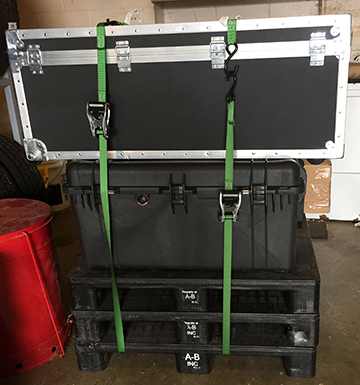
The 3 plastic pallets, 2 cases and the banner are strapped together in a single stack for shipping.
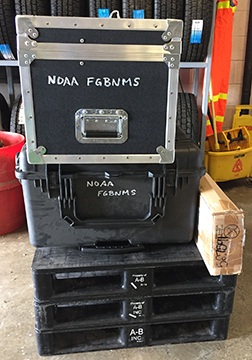
Side view of the 3 plastic pallets, with the 2 cases and banner strapped on top for shipping.
top of page
MOVE-IN REQUIREMENTS

Due to the large size and weight of the exhibit units, a forklift and a pallet jack are need to move the pieces around. Each crated unit weighs about 500 pounds and is 100.5" tall.
To get the exhibit into a building you will need the following:
- Forklift to unload exhibit crates from shipping truck.
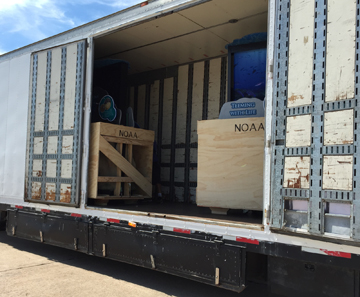
Exhibit crates inside semi truck used for shipping
- Double doors at least 6 feet tall with no center post, or a removable center post.
- Pallet jack to move the exhibit from delivery area to exhibit.
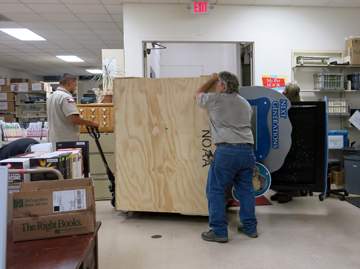
Moving exhibit crate with a pallet jack
- Strong bodies to lay the crates on their sides for transport, right the crates again once on location, and unload the units from the crates.
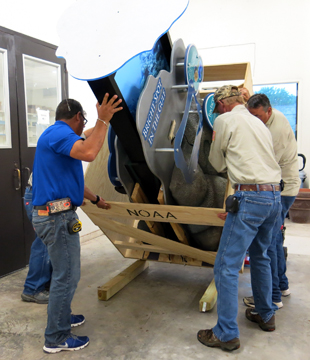
Tipping exhibit crate onto 4"x4" lumber
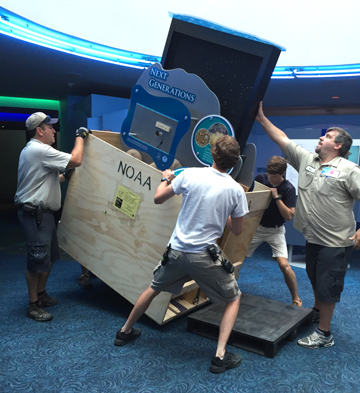
Tipping exhibit crate onto a plastic pallet
At the exhibit location, you will need one floor level electrical outlet for each unit and/or an extension cord to plug into an overhead outlet.
- Electrical outlets need to be covered to prevent visitor/guest access or repeated unplugging.
- Wall outlets may be used, but the exhibit cord needs to be covered to prevent damage to the exhibit or danger to visitors/guests.
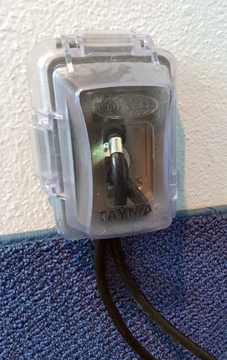
Protective outlet cover
The exhibit display area must be at least ten feet high for complete display of each unit.
- Unit height can be adjusted down to nine feet, but some of the background image will be hidden.
top of page
EXHIBIT COSTS

There is no fee to host the "Reef on the Road" exhibit, but there is a shipping and setup cost.
The host site is asked to pay for the cost of insuring and shipping the exhibit from its previous location, and for a sanctuary staff person to be on site to supervise the unloading and installation.
While on site, the sanctuary staff person will also provide training regarding operation of the exhibit and background information about the sanctuary.
top of page
Exhibit content
Images from Exhibit Host Sites
Reef On The Road Handout (307kb pdf)
If you have questions or are interested in bringing this exhibit to your facility, please contact Kelly.Drinnen@noaa.gov